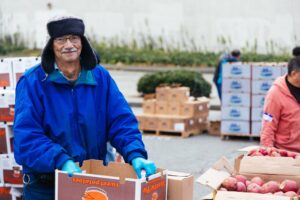 Volunteering with the Food Bank in May 2020 was really a no-brainer for Mitchell. As a retired government worker for various public health agencies, he already had a deep knowledge of epidemics and health outbreaks. Combined with the driving force of his faith, Mitchell knew he wanted to help his community out during a difficult and pivotal time.
Volunteering with the Food Bank in May 2020 was really a no-brainer for Mitchell. As a retired government worker for various public health agencies, he already had a deep knowledge of epidemics and health outbreaks. Combined with the driving force of his faith, Mitchell knew he wanted to help his community out during a difficult and pivotal time.
“I come from a Jewish culture that mandates we help repair the world. I heard that the Food Bank needed volunteers, so I went down, I signed up and that’s where I’ve been,” Mitchell told us.
Community: An Antidote to Isolation
Today, Mitchell is a regular fixture at four pantries a week, with more than 1300 volunteer hours under
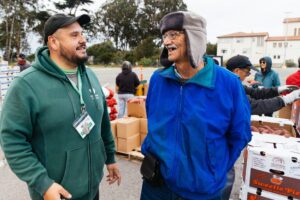
his belt. Though he has some ambitious ideas for getting more folks involved with volunteering – “get influencer people, the ones with the hot names to plug the Food Bank. Maybe Taylor Swift, I understand she’s an influencer” – we think his own testimony is pretty convincing.
“A lot of seniors isolated themselves during the pandemic. Being at the Food Bank allows you to be with real-life people. So it’s very good for the psyche, the mental health,” Mitchell shared. And aside from the social component, “going to the Food Bank is like going to the gym. I can lift a 60-pound bag of rice from 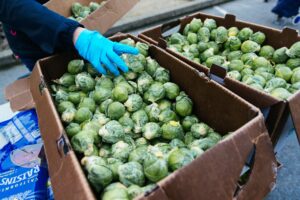 a pallet and put it on the table. And I will be 80 years old in July!”
a pallet and put it on the table. And I will be 80 years old in July!”
Outside of his busy Food Bank shift schedule, Mitchell is active in Lao and Burmese communities in the Bay, a longtime affinity and connection that stems back to his college days. He also became interested in Legos during the pandemic, dedicating his entire living room to elaborate Lego sets: “my living room is a museum!”
Join Mitchell
In addition to his extensive volunteering, Mitchell also donates to the Food Bank each month – a crucial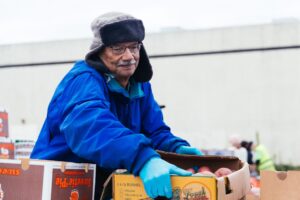 way to ensure we can continue meeting the immediate needs of our neighbors while strategically planning for more long-term, holistic solutions in the future. Thank you, Mitchell, for your dedication to ending hunger in San Francisco and Marin! We can’t do this work without supporters like you.
way to ensure we can continue meeting the immediate needs of our neighbors while strategically planning for more long-term, holistic solutions in the future. Thank you, Mitchell, for your dedication to ending hunger in San Francisco and Marin! We can’t do this work without supporters like you.
Becoming a monthly donor or a regular volunteer are two of the best ways you can support neighbors facing hunger. Make a gift or sign up for a shift to make a difference today!
Join Mitchell
Provide security for our neighbors and the Food Bank by becoming a monthly donor!
Donate now


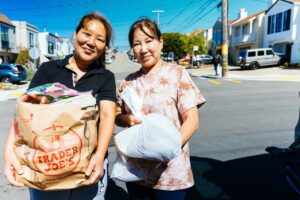
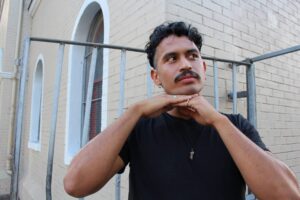
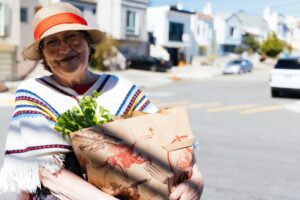
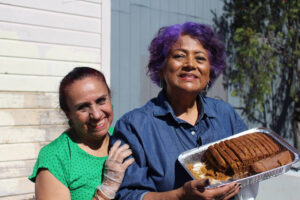
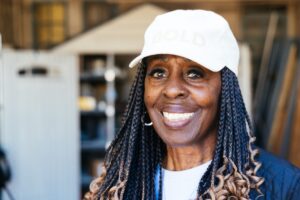
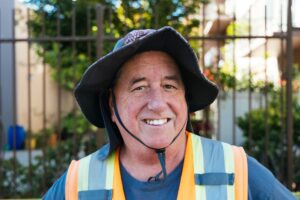

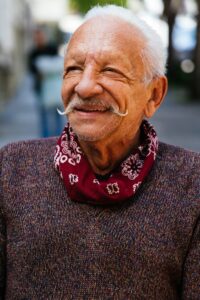 40 years, an activist, and a pantry participant since 2020 in his neighborhood of the Western Addition. He’s also one of roughly 101,000 CalFresh (known as SNAP federally) recipients in San Francisco who saw their grocery budget decimated overnight. This is due to the federal government’s decision to cut emergency allotments, which boosted CalFresh benefits by an average of $160 for recipients in San Francisco during the pandemic. That’s a loss of nearly $12 million a month in food assistance for our neighbors.
40 years, an activist, and a pantry participant since 2020 in his neighborhood of the Western Addition. He’s also one of roughly 101,000 CalFresh (known as SNAP federally) recipients in San Francisco who saw their grocery budget decimated overnight. This is due to the federal government’s decision to cut emergency allotments, which boosted CalFresh benefits by an average of $160 for recipients in San Francisco during the pandemic. That’s a loss of nearly $12 million a month in food assistance for our neighbors. For Miguel, his CalFresh benefits were a supplemental support that helped him stretch his budget and extend a little kindness to other friends who were struggling during the throes of the pandemic. “I was able not only to get things for myself, but I was able to invite friends to get food with me so we can have dinner together. I did it with two friends, maybe every two weeks. Eating alone is not really the best thing. Having company and being able to provide something a little extra, that was very nice. It really made a difference for me and my friends.”
For Miguel, his CalFresh benefits were a supplemental support that helped him stretch his budget and extend a little kindness to other friends who were struggling during the throes of the pandemic. “I was able not only to get things for myself, but I was able to invite friends to get food with me so we can have dinner together. I did it with two friends, maybe every two weeks. Eating alone is not really the best thing. Having company and being able to provide something a little extra, that was very nice. It really made a difference for me and my friends.”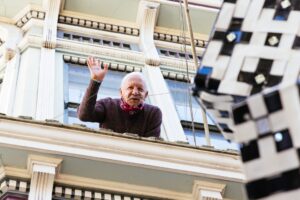 leave food banks to pick up the slack, it’s essential that the Food Bank maintains access to the fresh produce, proteins, and grains that 53,000 neighbors rely on weekly to nourish themselves. “The benefit is greater than just food,” Miguel explained to us. “At my age, I don’t think there’s any stigma – I encourage other people to apply for these services. I have diabetes, so I have to be careful about what I’m eating. And besides the food, I can use the money [I save] on other things that are beneficial for my health or enjoyment. It’s a ripple effect; it magnifies your life in all these positive ways.”
leave food banks to pick up the slack, it’s essential that the Food Bank maintains access to the fresh produce, proteins, and grains that 53,000 neighbors rely on weekly to nourish themselves. “The benefit is greater than just food,” Miguel explained to us. “At my age, I don’t think there’s any stigma – I encourage other people to apply for these services. I have diabetes, so I have to be careful about what I’m eating. And besides the food, I can use the money [I save] on other things that are beneficial for my health or enjoyment. It’s a ripple effect; it magnifies your life in all these positive ways.”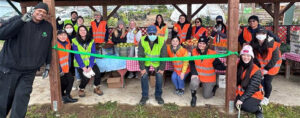 As partners reopen, “we’re reaching out to neighbors [currently enrolled in Food Bank-run pantries] to let them know they have a choice to return to their neighborhood pantry,” said Tina Gonzales, Director of Community Partnerships at the Food Bank. “When a pantry reopens, it’s exciting for people who used to go there – that’s their community.” Plus, pantries run by our partners will help us scale back our large Food Bank-run sites (which opened during the pandemic to meet the increased need, and are nearly all at capacity), making them smaller and more manageable.
As partners reopen, “we’re reaching out to neighbors [currently enrolled in Food Bank-run pantries] to let them know they have a choice to return to their neighborhood pantry,” said Tina Gonzales, Director of Community Partnerships at the Food Bank. “When a pantry reopens, it’s exciting for people who used to go there – that’s their community.” Plus, pantries run by our partners will help us scale back our large Food Bank-run sites (which opened during the pandemic to meet the increased need, and are nearly all at capacity), making them smaller and more manageable.
Share